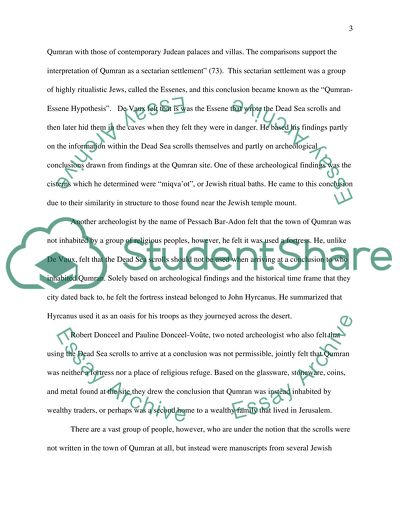Cite this document
(“Archeological Issues of the Qumran Site: Communal Life at Qumran and Research Paper”, n.d.)
Retrieved from https://studentshare.org/family-consumer-science/1416057-archeological-issues-of-the-qumran-site-communal
Retrieved from https://studentshare.org/family-consumer-science/1416057-archeological-issues-of-the-qumran-site-communal
(Archeological Issues of the Qumran Site: Communal Life at Qumran and Research Paper)
https://studentshare.org/family-consumer-science/1416057-archeological-issues-of-the-qumran-site-communal.
https://studentshare.org/family-consumer-science/1416057-archeological-issues-of-the-qumran-site-communal.
“Archeological Issues of the Qumran Site: Communal Life at Qumran and Research Paper”, n.d. https://studentshare.org/family-consumer-science/1416057-archeological-issues-of-the-qumran-site-communal.


